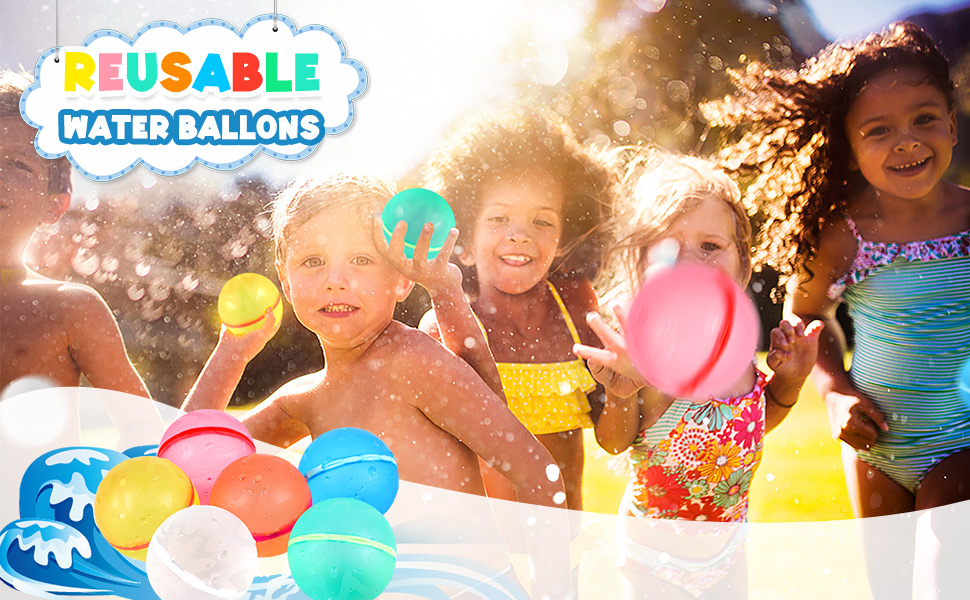The joy of water balloon fights is a cherished part of many people’s childhoods, providing hours of fun and laughter on hot summer days. However, the environmental consequences of traditional, single-use water balloons have become a growing concern. In response to this, a sustainable alternative has emerged in the form of reusable water balloons. In this article, we will explore the environmental impact of traditional water balloons, delve into the benefits of reusable alternatives, and discuss the growing popularity of these eco-friendly options.
The Environmental Toll of Traditional Water Balloons
Traditional water balloons are typically made of latex or plastic, materials that pose significant environmental challenges. The production of latex balloons involves harvesting rubber from rubber trees, which can lead to deforestation and habitat destruction. On the other hand, plastic balloons contribute to the global plastic pollution crisis, taking hundreds of years to decompose and releasing harmful chemicals into the environment as they break down.
Moreover, the single-use nature of traditional water balloons exacerbates their environmental impact. Once the fun is over, these balloons often end up littering parks, streets, and water bodies, posing a threat to wildlife. Animals may mistake balloon fragments for food, leading to ingestion and potential harm. Additionally, the process of manufacturing and transporting single-use balloons contributes to carbon emissions, further contributing to climate change.
The Rise of Reusable Water Balloons
In response to the environmental concerns surrounding traditional water balloons, reusable alternatives have gained popularity. These eco-friendly options are typically made from durable materials such as silicone or recycled plastics, allowing them to withstand multiple uses without losing their integrity.
Benefits of Reusable Water Balloons
Environmental Sustainability: The primary advantage of reusable water balloons lies in their reduced environmental impact. By eliminating the need for single-use plastics or latex, these alternatives help mitigate the problems associated with pollution and resource depletion.
Cost-Effectiveness: While reusable water balloon’s may have a higher upfront cost than their single-use counterparts, their durability and ability to be used repeatedly make them a cost-effective option in the long run. Families and individuals can enjoy countless water balloon fights without continually purchasing new supplies.
Easy Maintenance: Reusable water balloon’s are generally easy to clean and maintain. Most can be washed with soap and water, making them ready for the next round of water-filled fun. This simplicity encourages regular use and minimizes the environmental impact associated with constant disposal.
Variety of Designs: Manufacturers of reusable water balloons often offer a wide range of colors, shapes, and sizes, allowing users to personalize their water balloon experience. This variety enhances the appeal of reusable options, catering to different preferences and age groups.
Education and Awareness: Choosing reusable water balloon’s fosters a sense of environmental responsibility and encourages a sustainable mindset, particularly in younger generations. By opting for eco-friendly alternatives, families can instill values of conservation and waste reduction.
The Growing Popularity of Reusable Water Balloons
As environmental awareness continues to rise, so does the popularity of reusable water balloons. Social media platforms, parenting blogs, and eco-conscious communities have played a significant role in promoting these sustainable alternatives. Consumers are increasingly seeking ways to reduce their ecological footprint, and reusable water balloons offer a fun and practical solution for environmentally conscious families.
Manufacturers have also recognized the demand for eco-friendly options and are investing in the development of innovative and attractive reusable water balloons. The market now boasts a variety of shapes, sizes, and materials, providing consumers with ample choices to suit their preferences.
Conclusion
The shift towards reusable water balloon’s represents a positive step in the journey towards a more sustainable and environmentally conscious lifestyle. By choosing these eco-friendly alternatives, individuals and families can enjoy the timeless fun of water balloon fights without contributing to the environmental issues associated with traditional, single-use options.
As we continue to seek ways to reduce our impact on the planet, small changes in our daily activities, such as opting for reusable water balloons, can collectively make a significant difference. The splash of sustainability brought by reusable water balloon’s not only preserves the joy of water balloon fights but also contributes to a healthier and cleaner environment for generations to come.







